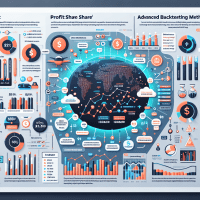Top 10 Tips to Choose a Prop Firm in 2025: Expert Insights
Proprietary trading is evolving rapidly. In 2025, choosing the right prop trading firm means staying ahead of both market trends and advanced strategy testing. This comprehensive guide explores key considerations, advanced backtesting methods, detailed tool comparisons, and actionable insights tailored for a diverse trading audience—junior traders, senior quants, and risk managers alike.
Key Considerations When Evaluating Prop Trading Firms
When selecting a prop firm, keep these critical factors in mind:
- Capital Structure & Profit Splits: Understand fee structures, profit splits, and the risk capital provided.
- Risk Management: Evaluate risk limits, maximum drawdown policies, and stop-loss criteria.
- Technology & Tools: Ensure they use advanced backtesting platforms and offer seamless integrations with trading tools.
- Regulatory Compliance: Familiarize yourself with how the firm adheres to MiFID II, ESMA, and NFA rules.
- Support for Strategy Testing: The best firms provide robust backtesting and live simulation environments.

This interface screenshot illustrates a typical backtesting dashboard used by leading prop trading firms, emphasizing real-time analytics and automated reporting capabilities.
Advanced Backtesting and Strategy Validation Techniques
Backtesting is integral to prop trading as it validates strategies using historical data. However, traders must be wary of pitfalls such as overfitting, survivorship bias, and look-ahead bias. Here are some expert guidelines:
Common Backtesting Pitfalls and How to Avoid Them
- Overfitting: Use out-of-sample testing and cross-validation for more robust models.
- Survivorship Bias: Incorporate non-survivor data to ensure accuracy.
- Data Snooping: Maintain discipline by separating hypothesis testing from dataset evaluation.
Walk-Forward Optimization vs. Traditional Backtesting
Walk-forward optimization dynamically tests your model over moving time windows, ensuring that each test period remains independent. This approach, in contrast to static backtesting, helps adapt strategies to evolving market conditions.
Comparing Leading Backtesting Tools for Prop Trading
Effective prop trading relies on using robust platforms. Below is an in-depth comparison of some renowned automated backtesting and trading tools:
TradingView, MetaTrader 5, and NinjaTrader
| Feature | TradingView | MetaTrader 5 | NinjaTrader |
|---|---|---|---|
| Backtesting Approach | Vectorized, script-based | MQL5 automated backtesting | Event-driven, highly customizable |
| Data Quality | Extensive historical data; multiple asset classes | High-quality tick and bar data | Robust market data feeds with broker integration |
| Integration | API access; community scripts | Direct broker integrations; third-party plugins | Seamless with various brokers & charting tools |
| Pricing & Trials | Subscription-based; free trial available | Free demo account; licensed versions | Free version with paid upgrades |
QuantConnect vs. Sierra Chart
QuantConnect offers algorithmic trading with an emphasis on automated parameter optimization, sophisticated report generation, and scenario analysis. It provides extensive historical data for equities, forex, and futures with API integration for brokerage compatibility. In contrast, Sierra Chart is well-regarded for its real-time analysis, advanced charting capabilities, and customizable risk management tools, making it ideal for prop firms concerned with precise, short-term execution.
Case Study: Real-World Impact of Advanced Backtesting
Consider a mid-sized prop firm that recently integrated NinjaTrader and QuantConnect into their trading environment. The team, consisting of junior traders and senior quants, initially faced challenges with overfitting and delayed stress-testing feedback. By incorporating walk-forward optimization and rigorous out-of-sample testing, they managed to improve their strategy’s Sharpe ratio from 1.2 to 1.8 and reduced maximum drawdown by 15%.
This case underscores the direct benefits of using advanced backtesting tools, including automated parameter optimization and detailed comparative analysis. For more insights, check out our Advanced Trading Strategies for prop traders.

The chart above demonstrates how quantitative metrics like drawdown and profit factors are monitored in real-time, enabling traders to optimize their strategies continuously.
Expert Guidance: Avoiding Pitfalls and Bridging Backtesting with Live Trading
While robust backtesting is crucial, integrating these results into live (paper) trading environments is equally important. Here are some pro tips:
- Integrate Forward Testing: Always follow up with paper trading to validate live strategy performance.
- Key Metrics Monitoring: Track Sharpe ratios, maximum drawdowns, and profit factors continuously during live tests.
- Data Quality: Ensure your data feed is reliable by comparing tick data against bar data and cross-referencing multiple data sources.
- Automated Algorithms: Utilize Python-based frameworks such as Backtrader for real-time strategy adjustments. For example, a simple moving average crossover can be coded as follows:
import backtrader as btclass SmaCross(bt.SignalStrategy):
def __init__(self):
sma1 = bt.ind.SMA(period=10)
sma2 = bt.ind.SMA(period=30)
self.signal_add(bt.SIGNAL_LONG, bt.ind.CrossOver(sma1, sma2))
Next Steps and Actionable Insights
In summary, choosing the right prop trading firm and leveraging advanced backtesting strategies can significantly elevate trading performance. The above tips and detailed tool comparisons provide a solid foundation for both novice and experienced traders.
For further insights and resources, explore our Risk Management Checklist designed to guide firms in setting up robust risk controls. Additionally, consider attending our upcoming webinar for a live Q&A session with industry experts.
Call to Action
Ready to optimize your trading strategies? Download our comprehensive Risk Management Checklist and subscribe to our newsletter for the latest trends in prop trading.







